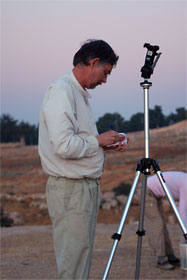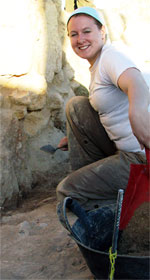Weekly Reports from Jordan
Choose Year: or Choose week
12:02 PM: Postscript to a Great Season
By Douglas Clark, Director
 The last guffa has been packed away, the final crate stored, the windows and door to the third-floor storage room at the Amman Training College sealed shut. At 12:02 PM on Friday 30 July, the 2010 season of excavations officially closed down its operations with the ceremonial locking of the hallway door. No witnesses that I could see, no celebration, but still official. And we will leave a key so that school administrators can get in should some itinerant archaeophile need some equipment before our next season in 2012.
The last guffa has been packed away, the final crate stored, the windows and door to the third-floor storage room at the Amman Training College sealed shut. At 12:02 PM on Friday 30 July, the 2010 season of excavations officially closed down its operations with the ceremonial locking of the hallway door. No witnesses that I could see, no celebration, but still official. And we will leave a key so that school administrators can get in should some itinerant archaeophile need some equipment before our next season in 2012.
12:02 PM was not a second too soon, as 350 Palestinian refugee children descended on the school with their 70 or so counselors and took over the buildings for this summer’s orphans camp. It will run until Ramadan, which begins around the tenth of August and which does not lend itself to the care and feeding of 400 people in a camp setting. While we grouse about the inconvenience of two major programs using the same facilities close to each other in time, I have nothing but respect for the administrators who run the Orphans Association out of the Baqa Refugee Camp north of Amman. The mudir, or leader, is a surgeon who, along with many others, dedicates days and weeks of his time to making sure Palestinian refugee children have a camp to attend and good lessons to learn. Click here for PDF version of a PowerPoint presentation on Palestinian refugee camps and what UNWRA (the United Nations Works and Relief Administration) is doing for orphan children.
 With the close of the season come memories, memories of friendships forged, Spartan living conditions endured, hard work accomplished, dust inhaled, watermelon consumed, locus sheets filled in, dirt-crested guffas hauled, new tastes experienced.
With the close of the season come memories, memories of friendships forged, Spartan living conditions endured, hard work accomplished, dust inhaled, watermelon consumed, locus sheets filled in, dirt-crested guffas hauled, new tastes experienced.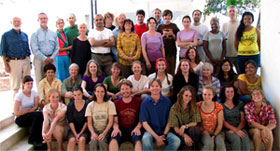
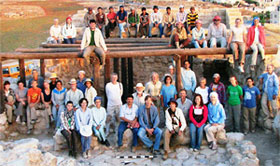
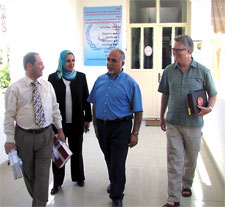
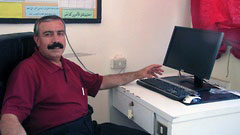
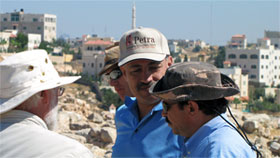
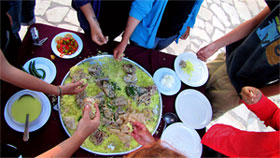
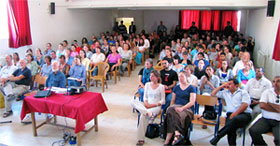



The season was characterized by good health; aside from the normal stomach issues foreigners often experience, we only had one person off site because of illness and that for only one and a half days. Thank goodness, no accidents or trips to the emergency room. In a summer of broken ankles among archaeologists in Jordan, we were fortunate to have held our bones together quite well.
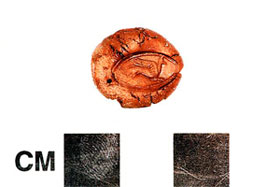 The summer was also very productive. With 40 team members on site; four fields in operation, each with several 5X5-meter squares undergoing excavation; and four young and rustless field supervisors and chief archaeologist, we made intriguing discoveries and cleared from the earth layers important architectural structures.
The summer was also very productive. With 40 team members on site; four fields in operation, each with several 5X5-meter squares undergoing excavation; and four young and rustless field supervisors and chief archaeologist, we made intriguing discoveries and cleared from the earth layers important architectural structures. 

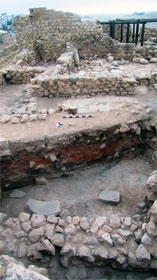
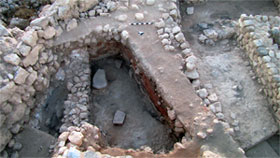

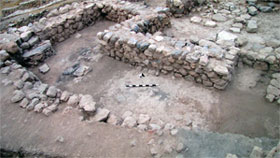
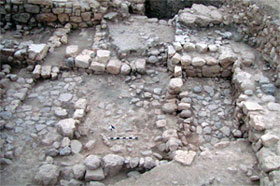
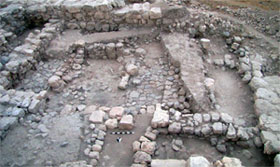
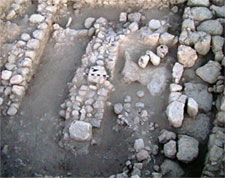
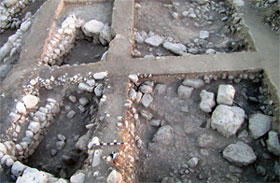

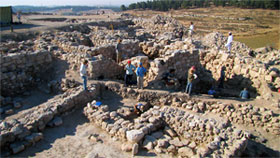
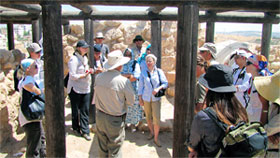 We enjoyed the visits of guests from Amman, from northern Europe and North America.
We enjoyed the visits of guests from Amman, from northern Europe and North America. 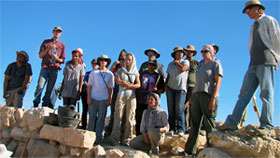
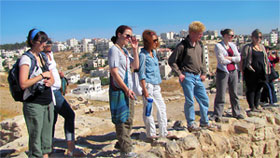
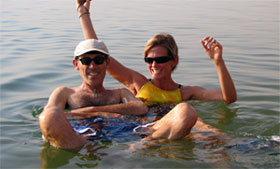 And we became visitors to sites all around Jordan.
And we became visitors to sites all around Jordan. 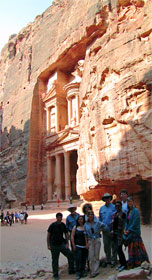
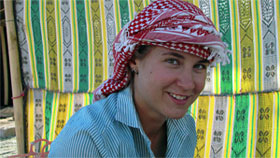
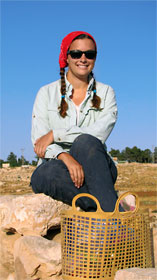 Currently at ACOR, all four field supervisors–Lizzy Brown, Stephanie Brown, Carrie Duncan and Monique Vincent are writing their Field reports under the direction of chief archaeologist Kent Bramlett with computer assistance from Matt Vincent. This is a new process, but should ensure that all reports are completed at least in draft form before we leave Jordan and our memories fade with some of the details now fresh in our minds.
Currently at ACOR, all four field supervisors–Lizzy Brown, Stephanie Brown, Carrie Duncan and Monique Vincent are writing their Field reports under the direction of chief archaeologist Kent Bramlett with computer assistance from Matt Vincent. This is a new process, but should ensure that all reports are completed at least in draft form before we leave Jordan and our memories fade with some of the details now fresh in our minds.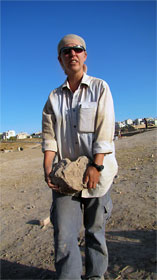
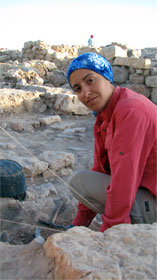
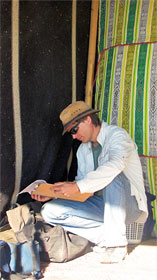
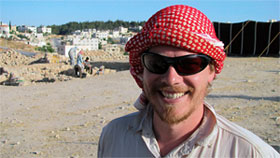
We are also concluding our work of shipping objects and artifacts to the US, cementing relationships with some of our friends in government, paying the rest of our bills, setting things up for our consolidator to come to the site next week in order to stabilize our stone walls so that the goats don’t tear them apart with their pointy little feet.
In addition, we are preparing for aerial photos of the site. We have not done this since the late 80s and, with helium balloons, the mid-90s, but would like to see the view from on high of our excavation areas and of the site as a whole. Through the Department of Antiquities we have obtained the military’s permission, but will not be able to afford the $6,195 per hour fee for a three-seater EC-635, nor the $9,661 fee for a ten-seater Super Puma. We are now working with David Kennedy, an Australian who regularly shoots aerial photos and who will be able to photograph `Umayri in October, insha`allah (God willing).
We have also marked out with GPS what we think should be preserved of the site of Tall al-`Umayri, and have requested the Ministry of Land to look over our stakes and confirm them for their official records. This will help in the event we can come to terms with our generous land owners, one of whom we visited on Monday, to prepare the site for presentation to the public, something we hope to accomplish for educational purposes.
With immense gratitude, we thank everyone on the 2010 team; all the consortium schools and their administrators who supported our work (La Sierra University, The School of Architecture at Andrews University, Canadian University College, Mount Royal University, Pacific Union College, and Walla Walla University); 30+ private donors; our colleagues in the Department of Antiquities of Jordan, especially Romel Gharib our representative; our good friends at the American Center of Oriental Research in Amman; and the land owners of Tall al-`Umayri, Dr. Raouf Abujaber and Mr. Jebril Abu Aisha.
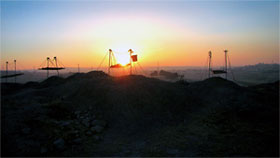 We hope by means of our research to contribute not only to the growing body of information about Jordan’s considerable cultural heritage, but to the cross-cultural engagement of people from various nations converging in one place to learn about and appreciate each other for reasons of mutual understanding and peace in this region of the Middle East.
We hope by means of our research to contribute not only to the growing body of information about Jordan’s considerable cultural heritage, but to the cross-cultural engagement of people from various nations converging in one place to learn about and appreciate each other for reasons of mutual understanding and peace in this region of the Middle East.
